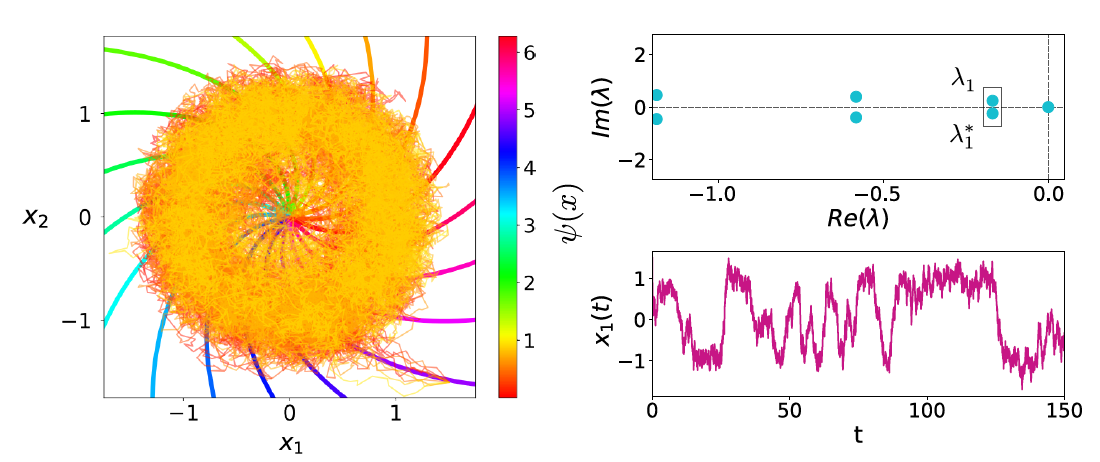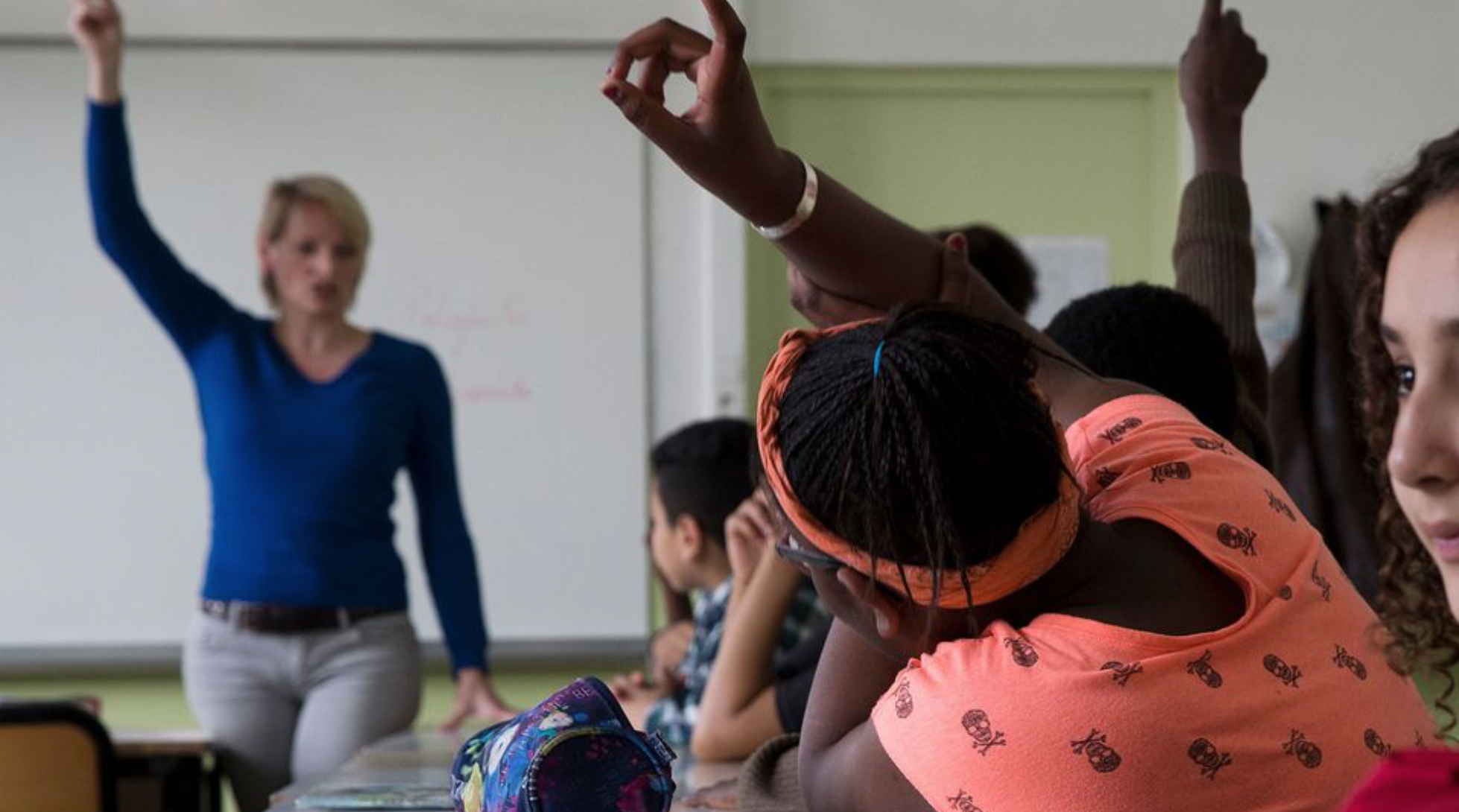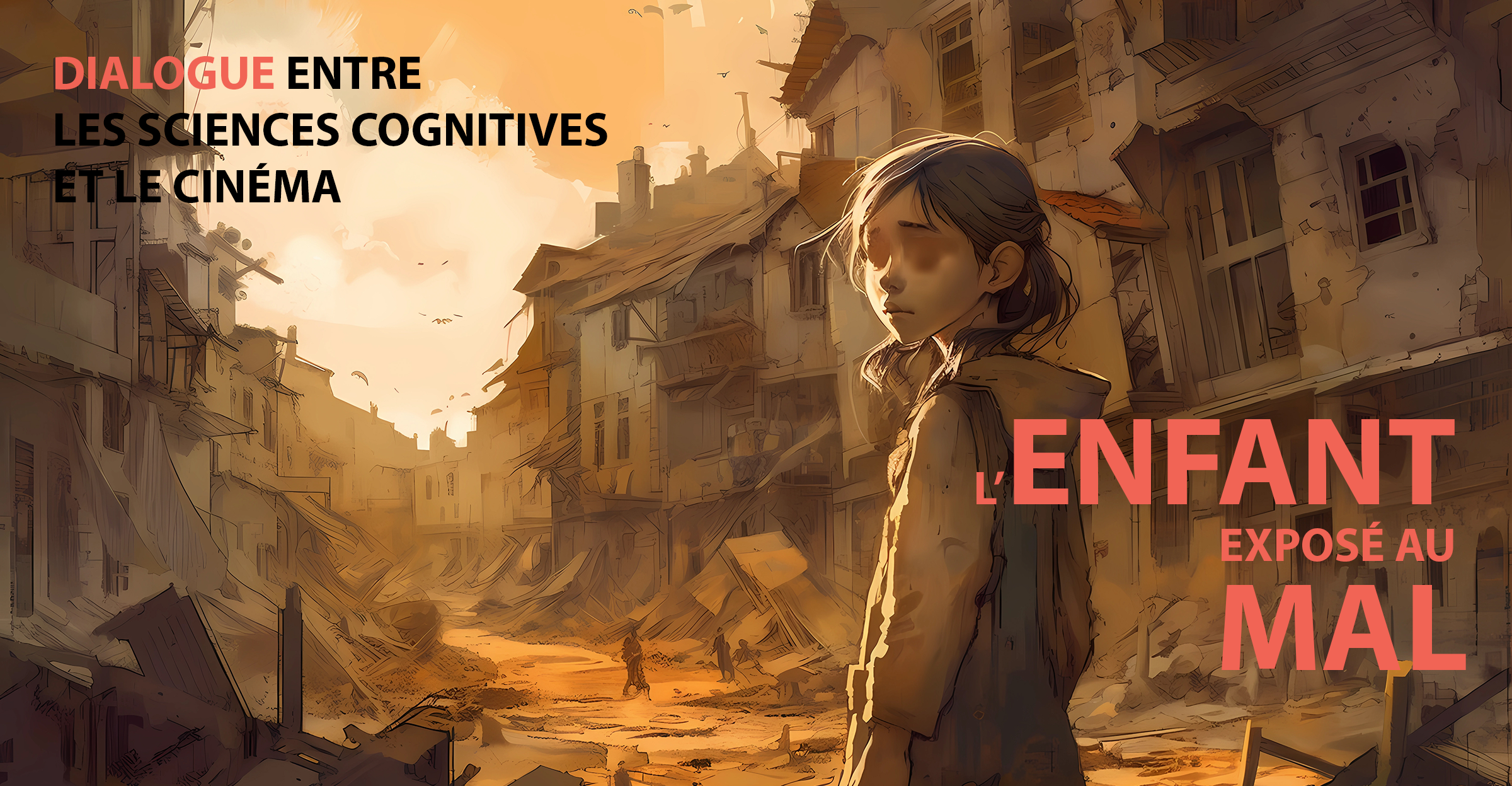RECHERCHE
Les mamans s’expriment plus clairement lorsqu’elles parlent à un bébé ou à un chiot

Les mères ont tendance à s’adresser d’une manière particulière à leur bébé. Le ton de leur voix s’adoucit et les mots sont articulés clairement. Mais pour quelles raisons adaptent-elles naturellement leur discours ? Le font-elles systématiquement ?
Dans une étude publiée dans Journal of Child Language, une équipe de chercheuses de Virginia Tech (Virginie, Etats-Unis), de l’Ecole normale supérieure-PSL et de Pacific Lutheran University (Washington, Etats-Unis) a enregistré et analysé les paroles de dix mères à leur enfant de six mois, à des chiots et à des adultes. Les scientifiques ont constaté que le discours des mères adressé aux bébés et aux chiots est particulièrement clair et articulé. Cette clarté semble être liée à un état émotionnel positif suscité par les bébés et les chiots.
Lire l'article
Une description universelle des oscillateurs stochastiques

De nombreux systèmes naturels présentent des oscillations, c'est-à-dire des fluctuations importantes de fréquence et d'amplitude. Cette variabilité peut résulter d'une grande variété de mécanismes physiques, si bien que les descriptions théoriques de ces phénomènes ont été effectuées au cas par cas.
Dans un article publié dans Proceedings of the National Academy of Sciences, une équipe interdisciplinaire de scientifiques de l’Universidad Complutense de Madrid, de Humboldt University et du Bernstein Center for Computational Neuroscience à Berlin, et de l’Ecole normale supérieure-PSL à Paris, propose une nouvelle description universelle des oscillateurs stochastiques.
Lire l'article
ENSEIGNEMENT
L’application des sciences cognitives dans l‘entreprise

Apparues dans les années cinquante, les sciences cognitives se sont développées et connaissent aujourd’hui un nombre croissant d'applications dans des secteurs extrêmement divers comme, par exemple, l’éducation, les politiques publiques ou encore la planification urbaine.
Pour répondre aux besoins définis par ces nouvelles applications, le Master de sciences cognitives de PSL propose une majeure en Ingénierie Cognitive. Alejandrina Cristia, chercheuse au Laboratoire de Sciences Cognitives et Psycholinguistique de l’ENS-PSL et Nawal Abboub, docteure en sciences cognitives, co-fondatrice de Rising-Up, et responsable des partenariats au sein du master ont créé un cours pratique sur les applications des sciences cognitives dans le “monde réel”, dans le cadre de cette majeure. Rencontre avec ces deux spécialistes des sciences cognitives.
Lire l'article
PARCOURS
Tous les chemins mènent au DEC
Le Département d'Études Cognitives accueille des étudiant.es et des chercheur.ses aux profils très variés. Tous les chemins mènent au DEC est une nouvelle série de vidéos mettant en avant la variété de ces parcours qui fait toute la richesse de notre communauté.
SCIENCE POUR TOUTES/TOUS
Un livre, un café - Frédérique de Vignemont, "Désenchanter le corps. Aux origines de la conscience de soi"
Une nouvelle série de capsules vidéo pour découvrir les ouvrages des scientifiques du département d'études cognitives.
Frédérique de Vignemont est la première invitée de cette série intitulée "Un livre, un café". Chercheuse philosophe, directrice adjointe de l'Institut Jean Nicod, Frédérique de Vignemont parle de son dernier livre "Désenchanter le corps. Aux origines de la conscience de soi" paru chez Odile Jacob. Le nouvel essai de la philosophe montre comment le développement personnel, fondé sur l’attention au corps, entrave l’ouverture à autrui.
Cognitations : un podcast pour découvrir les sciences cognitives
Comment fonctionne l’esprit humain ? Tanay Katiyar et Jay Richardson ont décidé de creuser la question en créant un podcast sur les sciences cognitives, Cognitations. Une série d'entretiens (en anglais) avec des chercheuses et de chercheurs pour découvrir ce domaine de recherche ainsi que les parcours des invité.es. Les deux étudiants en master de sciences cognitives à l'ENS-PSL racontent la génése de ce projet et sa mise en oeuvre.
Lire l'entretien.
Découvrez le premier épisode : "The evolutionary function of reasoning and epistemic vigilance", avec Hugo Mercier, chercheur à l'Institut Jean Nicod.
DANS LES MÉDIAS
Pourquoi si peu de femmes dans les carrières scientifiques ?

Mieux comprendre les mécanismes de l’exclusion des femmes dans ces domaines, pour mieux les combattre ! Un article de Clotilde Policar, professeure, directrice des études sciences à l'ENS et de Charlotte Jacquemot, chercheuse en sciences cognitives, directrice du Département d'études cognitives, pour The Conversation.
Lire l'article
L'apprentissage des goûts musicaux
Guilhem Marion, doctorant au Laboratoire des Systèmes Percpetifs, était invité à participer à l'émission "Affaires culturelles" sur France Culture pour parler de l'apprentissage des goûts musicaux.
Écouter le podcast
Les personnes à haut potentiel
Franck Ramus, invité du podcast Guideline.care, revient sur Les idées reçues sur les personnes à haut potentiel intellectuel
Le corps est-il dans l’esprit ou l’esprit est-il dans le corps ?

Comment les sciences cognitives éclairent d’un jour nouveau cet éternel débat philosophique ? Après avoir longtemps accordé la prééminence à l’esprit, aujourd'hui c’est au corps que l’on revient comme en réaction... Et s’il fallait sortir de ce dualisme pour comprendre que l’un ne va pas sans l’autre ? Frédérique de Vignemont, philosophe à l’Institut Jean Nicod, était l’invitée de l’émission Autour de la question sur RFI.
Écouter le podcast
Intelligence Artificielle : en mon âme et conscience

Après l’intelligence artificielle, les progrès théoriques et technologiques jalonnant l’évolution fulgurante du potentiel des machines pourraient-ils rendre possible l’émergence d’une forme de conscience synthétique ? Doctorante à l’Institut Jean Nicod, Aida Elamrani était l’invitée de La Science, CQFD sur France Culture.
Écouter le podcast
Aider son enfant à mieux apprendre : quelques conseils scientifiquement prouvés

La recherche en psychologie met en lumière les bonnes méthodes pour retenir ses leçons et consolider ses connaissances. Par Franck Ramus.
Lire l'article
Les bébés se servent d'indices cachés dans la grammaire pour apprendre de nouveaux mots très rapidement

Une étude publiée dans le journal scientifique Proceedings of the National Academy of Sciences révèle que les bébés apprennent des nouvelles règles de grammaire en quelques dizaines de minutes et sont capables de les utiliser immédiatement pour apprendre de nouveaux mots. Monica Barbir, première autrice de l'article était l'invitée du Journal des Sciences sur France Culture.
Écouter le podcast
À (RE)VOIR
Comment expliquer notre fascination pour les mondes imaginaires ?

Les mondes imaginaires connaissent un succès culturel impressionnant et grandissant. Pourquoi tant d'attention consacrée à des mondes inexistants ? Retrouvez la conférence de
Edgar Dubourg, doctorant à l’Institut Jean Nicod.
Voir la vidéo.
QUELQUES PUBLICATIONS RÉCENTES
Frédéric Apoux, Nicole Miller-Viacava, Régis Ferrière, Huanping Dai, Bernie Krause, Jérôme Sueur, Christian Lorenzi (2023). Auditory discrimination of natural soundscapes. J Acoust Soc Am 153, 2706. Doi : 10.1121/10.0017972
Résumé :
A previous modelling study reported that spectro-temporal cues perceptually relevant to humans provide enough information to accurately classify “natural soundscapes” recorded in four distinct temperate habitats of a biosphere reserve [Thoret, Varnet, Boubenec, Ferriere, Le Tourneau, Krause, and Lorenzi (2020). J. Acoust. Soc. Am. 147, 3260]. The goal of the present study was to assess this prediction for humans using 2 s samples taken from the same soundscape recordings. Thirty-one listeners were asked to discriminate these recordings based on differences in habitat, season, or period of the day using an oddity task. Listeners' performance was well above chance, demonstrating effective processing of these differences and suggesting a general high sensitivity for natural soundscape discrimination. This performance did not improve with training up to 10 h. Additional results obtained for habitat discrimination indicate that temporal cues play only a minor role; instead, listeners appear to base their decisions primarily on gross spectral cues related to biological sound sources and habitat acoustics. Convolutional neural networks were trained to perform a similar task using spectro-temporal cues extracted by an auditory model as input. The results are consistent with the idea that humans exclude the available temporal information when discriminating short samples of habitats, implying a form of a sub-optimality.
Rodrigue Bravard, Laurent Demany, Daniel Pressnitzer (2023). Controlling audibility with noise for online experiments using sound. JASA Express Lett.;3(6):064402. doi:10.1121/10.0019807. PMID: 37379207.
Résumé :
Online auditory experiments use the sound delivery equipment of each participant, with no practical way to calibrate sound level or frequency response. Here, a method is proposed to control sensation level across frequencies: embedding stimuli in threshold-equalizing noise. In a cohort of 100 online participants, noise could equate detection thresholds from 125 to 4000 Hz. Equalization was successful even for participants with atypical thresholds in quiet, due either to poor quality equipment or unreported hearing loss. Moreover, audibility in quiet was highly variable, as overall level was uncalibrated, but variability was much reduced with noise. Use cases are discussed.
Alain de Cheveigné (2023). In-channel cancellation: A model of early auditory processing . J Acoust Soc Am 153, 3350
Résumé :
A model of early auditory processing is proposed in which each peripheral channel is processed by a delay-and-subtract cancellation filter, tuned independently for each channel with a criterion of minimum power. For a channel dominated by a pure tone or a resolved partial of a complex tone, the optimal delay is its period. For a channel responding to harmonically related partials, the optimal delay is their common fundamental period. Each peripheral channel is thus split into two subchannels—one that is cancellation-filtered and the other that is not. Perception can involve either or both, depending on the task. The model is illustrated by applying it to the masking asymmetry between pure tones and narrowband noise: a noise target masked by a tone is more easily detectable than a tone target masked by noise. The model is one of a wider class of models, monaural or binaural, that cancel irrelevant stimulus dimensions to attain invariance to competing sources. Similar to occlusion in the visual domain, cancellation yields sensory evidence that is incomplete, thus requiring Bayesian inference of an internal model of the world along the lines of Helmholtz's doctrine of unconscious inference.
Edgar Dubourg, Valentin Thouzeau, Charles de Dampierre et al. (2023). Exploratory preferences explain the human fascination for imaginary worlds in fictional stories. Sci Rep 13, 8657. doi:10.1038/s41598-023-35151-2
Résumé :
Imaginary worlds are present and often central in many of the most culturally successful modern narrative fictions, be it in novels (e.g., Harry Potter), movies (e.g., Star Wars), video games (e.g., The Legend of Zelda), graphic novels (e.g., One Piece) and TV series (e.g., Game of Thrones). We propose that imaginary worlds are popular because they activate exploratory preferences that evolved to help us navigate the real world and find new fitness-relevant information. Therefore, we hypothesize that the attraction to imaginary worlds is intrinsically linked to the desire to explore novel environments and that both are influenced by the same underlying factors. Notably, the inter-individual and cross-cultural variability of the preference for imaginary worlds should follow the inter-individual and cross-cultural variability of exploratory preferences (with the personality trait Openness-to-experience, age, sex, and ecological conditions). We test these predictions with both experimental and computational methods. For experimental tests, we run a pre-registered online experiment about movie preferences (N = 230). For computational tests, we leverage two large cultural datasets, namely the Internet Movie Database (N = 9424 movies) and the Movie Personality Dataset (N = 3.5 million participants), and use machine-learning algorithms (i.e., random forest and topic modeling). In all, consistent with how the human preference for spatial exploration adaptively varies, we provide empirical evidence that imaginary worlds appeal more to more explorative people, people higher in Openness-to-experience, younger individuals, males, and individuals living in more affluent environments. We discuss the implications of these findings for our understanding of the cultural evolution of narrative fiction and, more broadly, the evolution of human exploratory preferences.
Pablo Fernandez-Velasco, Jade Nijman and Roberto Casati (2023). The cognitive advantages of the notebook. Cognitive Semiotics. doi:10.1515/cogsem-2023-2003
Résumé :
Notebooks are widely used in a large number of professional and everyday life contexts. The notebook has been widely mentioned in the context of distributed cognition, the extended mind hypothesis and the study of cognitive artefacts. Despite its ubiquity and almost paradigmatic status, to date, there is no dedicated analysis of the notebook qua cognitive artefact, to explain its success and its resilience. Our aim is to fill this gap in the literature by studying a set of cognitive advantages of the notebook. For our analysis, we employ the methodological framework of distributed cognition. Using this framework, we find a series of cognitive advantages at both an individual and at a group level. At an individual level, these include external non-biological memory, the consolidation of long-term biological memory encoding, effects on attention modulation, an enhancement in metacognition and the graphication of thought. At the group level, the cognitive advantages include collaboration, the transference of content from one user to another, group-level metacognition, coordination, and the transformation of the overall epistemological setting in which notebook use takes place.
Axel Garnier-Allain, Daniel Pressnitzer & Claire Sergent (2023). Retrospective cueing mediates flexible conscious access to past spoken words. Journal of Experimental Psychology: Human Perception and Performance.doi:10.1037/xhp0001132
Résumé :
Can we become aware of auditory stimuli retrospectively, even if they initially failed to reach awareness? Here, we tested whether spatial cueing of attention after a word had been played could trigger retrospective conscious access. Two sound streams were presented dichotically. One stream was attended for a primary task of speeded semantic categorization. The other stream included occasional target words, which had to be identified as a secondary task after the trial. We observed that cueing attention to the secondary stream improved identification accuracy, even when cueing occurred more than 500 ms after the target offset. In addition, such “retro-cueing” boosted the detection sensitivity and subjective audibility of the target. The effect was a perceptual one and not one based on enhancing or protecting conscious representations already available in working memory, as shown by quantitative models of the experimental data. In particular, the retro-cue did not gradually shift audibility but rather sharply changed the balance between fully audible and not audible trials. Together with remarkably similar results in vision, these results point to a previously unsuspected temporal flexibility of conscious access as a core feature of perception, across modalities. (PsycInfo Database Record (c) 2023 APA, all rights reserved)
Anastasia Giannakidou, Alda Mari (2023). The Italian futuro as a non-biased epistemic necessity: a reply to Ippolito and Farkas. Linguist and Philos doi:10.1007/s10988-023-09383-4
Résumé :
In a recent paper, Ippolito and Farkas (Linguist Philos, 45(4):943–984, 2022b) (I &F) question the premise that Italian future is epistemic necessity; in this brief response we want to show that there is no empirical motivation for abandoning it once we employ a more flexible framework of modality such as the one advanced in Giannakidou and Mari (Linguist Philos 41(6): 623–664, 2018) (G &M) which posits a ranking meta-evaluation in the modal structure that explains the empirical objections raised by I &F. We show that the core of the account in I &F shares the main ingredients with G &M and that, unlike what I &F propose, Italian future is not pure credence.
Alexey Koshevoy, Helena Miton, Olivier Morin (2023). Zipf’s Law of Abbreviation holds for individual characters across a broad range of writing systems. Cognition, 238, 105527, ISSN 0010-0277
Résumé :
Zipf’s Law of Abbreviation – the idea that more frequent symbols in a code are simpler than less frequent ones – has been shown to hold at the level of words in many languages. We tested whether it holds at the level of individual written characters. Character complexity is similar to word length in that it requires more cognitive and motor effort for producing and processing more complex symbols. We built a dataset of character complexity and frequency measures covering 27 different writing systems. According to our data, Zipf’s Law of Abbreviation holds for every writing system in our dataset — the more frequent characters have lower degrees of complexity and vice-versa. This result provides further evidence of optimization mechanisms shaping communication systems.
Maureen De Seyssel, Marvin Lavechin & Emanuel Dupoux (2023). Realistic and broad-scope learning simulations: First results and challenges. Journal of Child Language, 1-24. doi:10.1017/S0305000923000272
Résumé :
There is a current ‘theory crisis’ in language acquisition research, resulting from fragmentation both at the level of the approaches and the linguistic level studied. We identify a need for integrative approaches that go beyond these limitations, and propose to analyse the strengths and weaknesses of current theoretical approaches of language acquisition. In particular, we advocate that language learning simulations, if they integrate realistic input and multiple levels of language, have the potential to contribute significantly to our understanding of language acquisition. We then review recent results obtained through such language learning simulations. Finally, we propose some guidelines for the community to build better simulations.
Lorna Le Stanc, Katia Youssov, Maria Giavazzi, Agnes Sliwinski, Anne-Catherine Bachoud-Lévi, & Charlotte Jacquemot(2023). Language disorders in patients with striatal lesions: deciphering the role of the striatum in language performance. Cortex.doi:10.1016/cortex.2023.04.016.
Résumé :
The classical neural model of language refers to a cortical network involving frontal, parietal and temporal regions. However, patients with subcortical lesions of the striatum have language difficulties. We investigated whether the striatum is directly involved in language or whether its role in decision-making has an indirect effect on language performance, by testing carriers of Huntington's disease (HD) mutations and controls. HD is a genetic neurodegenerative disease primarily affecting the striatum and causing language disorders. We asked carriers of the HD mutation in the premanifest (before clinical diagnosis) and early disease stages, and controls to perform two discrimination tasks, one involving linguistic and the other non-linguistic stimuli. We used the hierarchical drift diffusion model (HDDM) to analyze the participants' responses and to assess the decision and non-decision parameters separately. We hypothesized that any language deficits related to decision-making impairments would be reflected in the decision parameters of linguistic and non-linguistic tasks. We also assessed the relative contributions of both HDDM decision and non-decision parameters to the participants' behavioral data (response time and discriminability). Finally, we investigated whether the decision and non-decision parameters of the HDDM were correlated with brain atrophy.
The HDDM analysis showed that patients with early HD have impaired decision parameters relative to controls, regardless of the task. In both tasks, decision parameters better explained the variance of response time and discriminability performance than non-decision parameters. In the linguistic task, decision parameters were positively correlated with gray matter volume in the ventral striatum and putamen, whereas non-decision parameters were not.
Language impairment in patients with striatal atrophy is better explained by a deficit of decision-making than by a deficit of core linguistic processing. These results suggest that the striatum is involved in language through the modulation of decision-making, presumably by regulating the process of choice between linguistic alternatives.
AGENDA
Colloque - "L'enfant exposé au mal", 6 et 7 octobre 2023 à l'ENS

L'ENS et Les enfants de cinéma proposent, les 6 et 7 octobre 2023, une rencontre entre le cinéma et les sciences cognitives sur le thème de l'enfant et du mal. Un dialogue entre les spécialistes du cinéma et des sciences cognitives pour comprendre et accompagner les émotions négatives des enfants lorsqu'ils sont exposés au mal.
Cet évènement est organisé par Les enfants de cinéma, Klara Kovarski (Laboratoire de Psychologie de l’Enfant et de l’Éducation, Sorbonne Université), Victor Chung et Julie Grèzes (Laboratoire de Neurosciences Cognitives et Computationnelles, ENS-PSL), Rocco Mennella (Laboratoire sur les interactions cognition, action, émotion, Université Paris Nanterre).
Un évènement ouvert à toutes et à tous. Inscription recommandée.
Le programme complet sera dévoilé très prochainement. Restez connecté.es !
Fête de la Science à l'ENS, dimanche 8 octobre 2023

Les départements de sciences de l'ENS accueilleront le public dimanche 8 octobre 2023, de 10h à 18h au 24 rue Lhomond pour une véritable fête de quartier autour des sciences.
Venez découvrir les sciences en famille ! Un programme pour petits et grands : escape game en salle blanche, visites de laboratoires, jeux, quizz, mini-cours, café des sciences, ateliers et expositions. Cette Fête de la Science s'adresse également aux lycéen.nes et aux étudiant.es interessé.es par les métiers de la recherche. Ils/elles pourront poser toutes leurs questions aux membres de la communauté normalienne à travers un speed meeting.
Le programme sera dévoilé à la rentrée sur le site internet de l'ENS et de la Fête de la Science.
Retrouvez tous les événements organisés par le DEC dans l'agenda du département.
Un grand nombre de séminaires et de conférences données par les chercheur.ses du DEC ou par nos invité.e.s sont accessibles sur la chaîne youtube du département, le site des Savoirs de l'ENS, la chaîne youtube de l'école.
